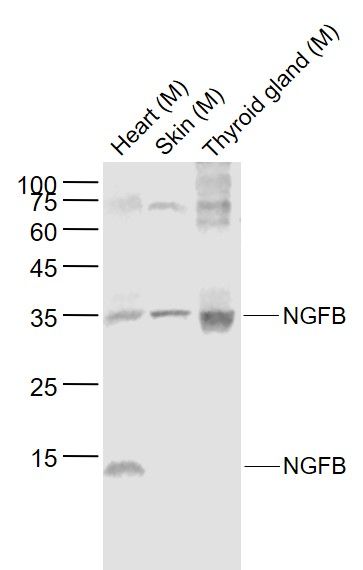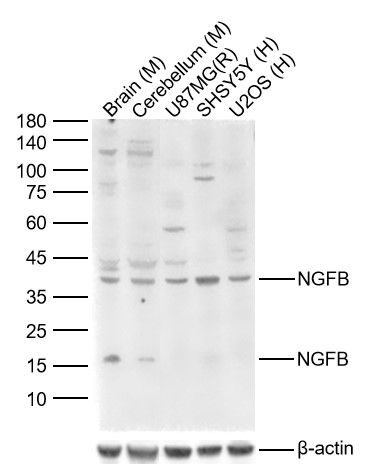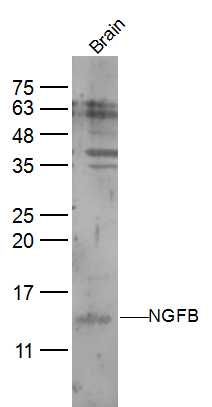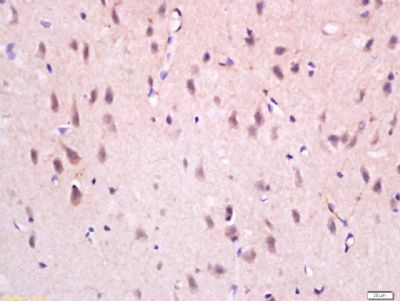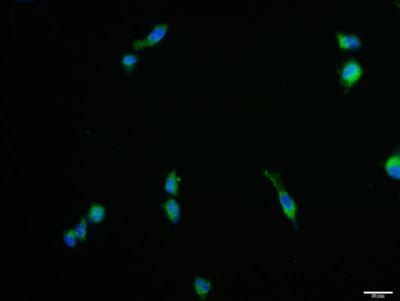Sample:
Lane 1: Heart (Mouse) Lysate at 40 ug
Lane 2: Skin (Mouse) Lysate at 40 ug
Lane 3: Thyroid gland (Mouse) Lysate at 40 ug
Primary: Anti-NGFB (SL10806R) at 1/1000 dilution
Secondary: IRDye800CW Goat Anti-Rabbit IgG at 1/20000 dilution
Predicted band size: 32/13 kD
Observed band size: 35/13 kD
Sample:
Lane 1: Mouse Brain Lysates
Lane 2: Mouse Cerebellum Lysates
Lane 3: Human U-87 MG cell Lysates
Lane 4: Human SH-SY5Y cell Lysates
Lane 5: Human U-2 OS cell Lysates
Primary: Anti-NGFB (SL10806R) at 1/1000 dilution
Secondary: IRDye800CW Goat Anti-Rabbit IgG at 1/20000 dilution
Predicted band size: 13/32kDa
Observed band size: 13/32kDa
Sample:
Brain (Rat) Lysate at 40 ug
Primary: Anti-NGFB (SL10806R) at 1/300 dilution
Secondary: IRDye800CW Goat Anti-Rabbit IgG at 1/20000 dilution
Predicted band size: 13 kD
Observed band size: 15 kD
Tissue/cell: Rat brain tissue; 4% Paraformaldehyde-fixed and paraffin-embedded;
Antigen retrieval: citrate buffer ( 0.01M, pH 6.0 ), Boiling bathing for 15min; Block endogenous peroxidase by 3% Hydrogen peroxide for 30min; Blocking buffer (normal goat serum,SLC0005) at 37℃ for 20 min;
Incubation: Anti-NGFB Polyclonal Antibody, Unconjugated(SL10806R) 1:200, overnight at 4°C, followed by conjugation to the secondary antibody(SP-0023) and DAB(SLC0010) staining
U87MG cell; 4% Paraformaldehyde-fixed; Triton X-100 at room temperature for 20 min; Blocking buffer (normal goat serum, SLC0005) at 37°C for 20 min; Antibody incubation with (NGFB) polyclonal Antibody, Unconjugated (SL10806R) 1:100, 90 minutes at 37°C; followed by a conjugated Goat Anti-Rabbit IgG antibody at 37°C for 90 minutes, DAPI (blue, C02-04002) was used to stain the cell nuclei.
|
